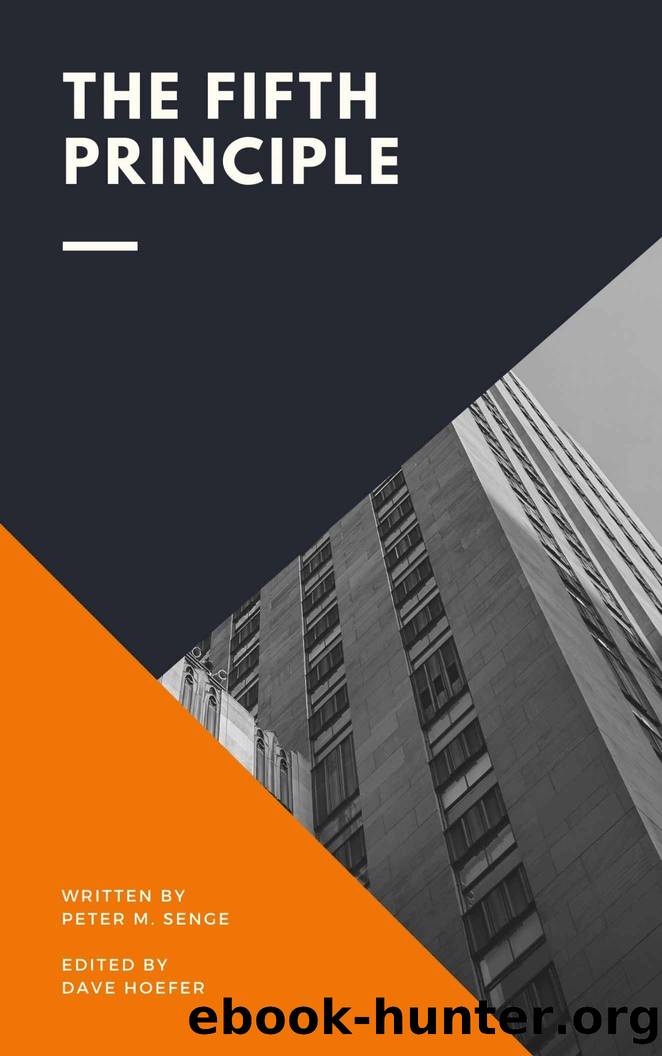THE FIFTH PRINCIPLE by Peter M. Senge

Author:Peter M. Senge
Language: eng
Format: azw3
Published: 2020-04-09T21:00:00+00:00
CHAPTER 11: GROUP LEARNING
TEAM'S POTENTIAL INTELLIGENCE
Basketball athlete Bill Russell talks about his Boston Celtics team as follows: "By creativity and talent, we are a collective of experts, and like a group of professionals in any field , our achievements depend on both individual talents and tight combinations together. None of us don't understand that we have to complement each other's pros, which is of course, and we all try to visualize ways to make that combination more effective... Most of us are quirky to social standards â not the kind of person mingled with other people or people who change their personality to suit what others would expect them to "[1].
[1]. W. Russell and T. Branch, Second Wind: Memoris of an Opinionated Man-2nd Wind: The signature of a perverse, (NXB Random House, New York), 1979
Russell carefully reminded us that it is not friendship, which is another form of collective relations, which produces the outstanding outcome of his team. That relationship, more than any personal achievement, gave him glorious moments in sports: he rewrote "every Celtic match is boiling, beyond the form of a muscular or spiritual match, it becomes a miracle. That feeling was difficult to describe, and I certainly never mentioned it while playing. When that feeling happened I could feel the match was pushed to a new level... It not only covered me and the other Celtics teammates but also covered the players on another team, and even the arbitral board... With that particular level, all strange things can take place. The game has a terrible level of competition, insomuch that I do not feel that marvelous competition... The match became so quick that every ball, cut and volleyball became surprising, yet nothing surprised me. It looks like we're playing at a slow rhythm. In such a fascination, I can be aware of how the game will be played and how the next blow will happen in a position... For me, the most important is that both teams play with all their highest strength and they have to compete... "
Russell's Celtics team (11 times world champion within 13 years) describes a phenomenon we call "consistency, alignment" (alignment), when a collective is campaiable as a uniform. In most collective, the energy of each member acts on cross-targeting. If we draw a picture of a collective as a set of members with different levels of "personal competence" (the ability to complete pre-defined results) towards different dimensions in life , that image should look like this: [2]
[2]. This chart belongs to the new paradigm for developing organizations of C. Kiefer and P. Stroh, in a work transformation (Transforming Work) edited by J. Adams (Miles Riler Press, Alexandria Va.), 1984
The fundamental nature of a non-uniform collective is energy wastage. Individuals can work very diligently, but their efforts do not convert effectively into collective efforts. Conversely, when a collective becomes identical, a correlation of orientation appears, and the energy of each individual is in harmony with each other. Energy will be less wasted.
In
Download
This site does not store any files on its server. We only index and link to content provided by other sites. Please contact the content providers to delete copyright contents if any and email us, we'll remove relevant links or contents immediately.
Tools of Titans by Timothy Ferriss(6949)
Change Your Questions, Change Your Life by Marilee Adams(6641)
Deep Work by Cal Newport(5467)
Man-made Catastrophes and Risk Information Concealment by Dmitry Chernov & Didier Sornette(4736)
Big Magic: Creative Living Beyond Fear by Elizabeth Gilbert(4723)
The Slight Edge by Jeff Olson(4722)
Digital Minimalism by Cal Newport;(4544)
The Motivation Myth by Jeff Haden(4528)
Stone's Rules by Roger Stone(4416)
Ego Is the Enemy by Ryan Holiday(3991)
The Laws of Human Nature by Robert Greene(3946)
Tuesdays with Morrie by Mitch Albom(3832)
Rising Strong by Brene Brown(3783)
Eat That Frog! by Brian Tracy(3514)
Skin in the Game by Nassim Nicholas Taleb(3462)
The Money Culture by Michael Lewis(3284)
Skin in the Game: Hidden Asymmetries in Daily Life by Nassim Nicholas Taleb(3264)
Believe It to Achieve It by Brian Tracy & Christina Stein(3206)
Bullshit Jobs by David Graeber(3180)
